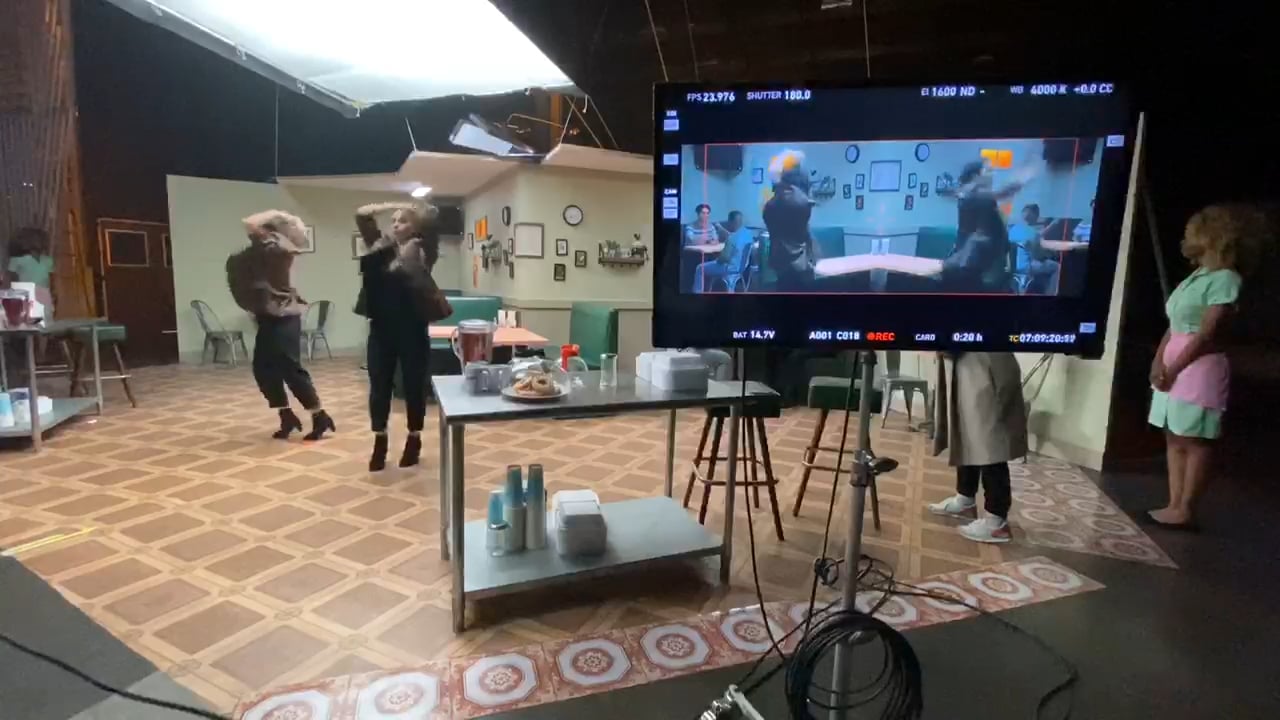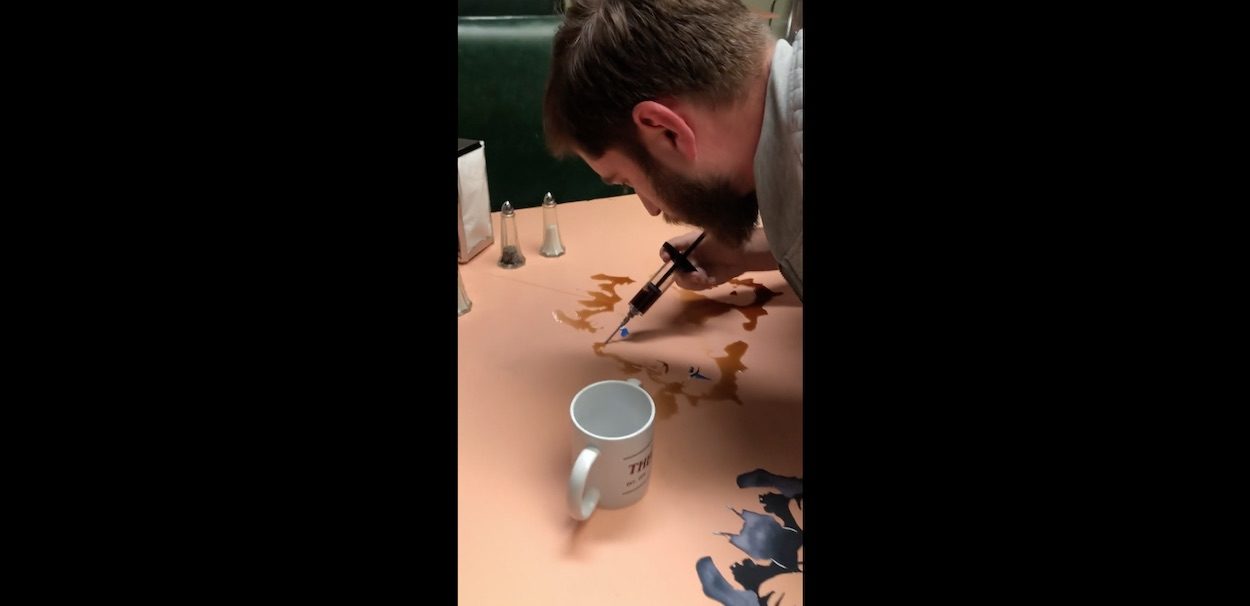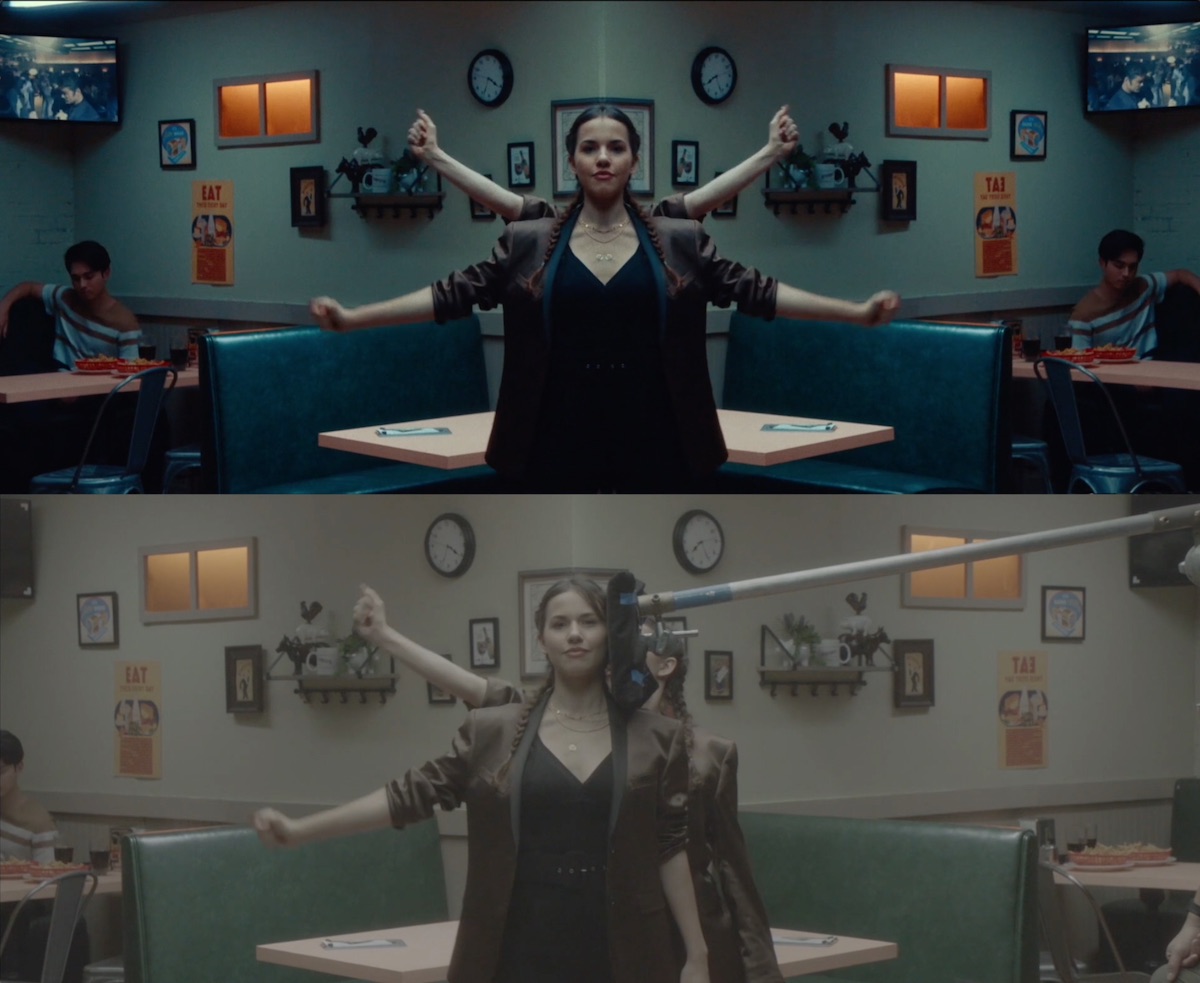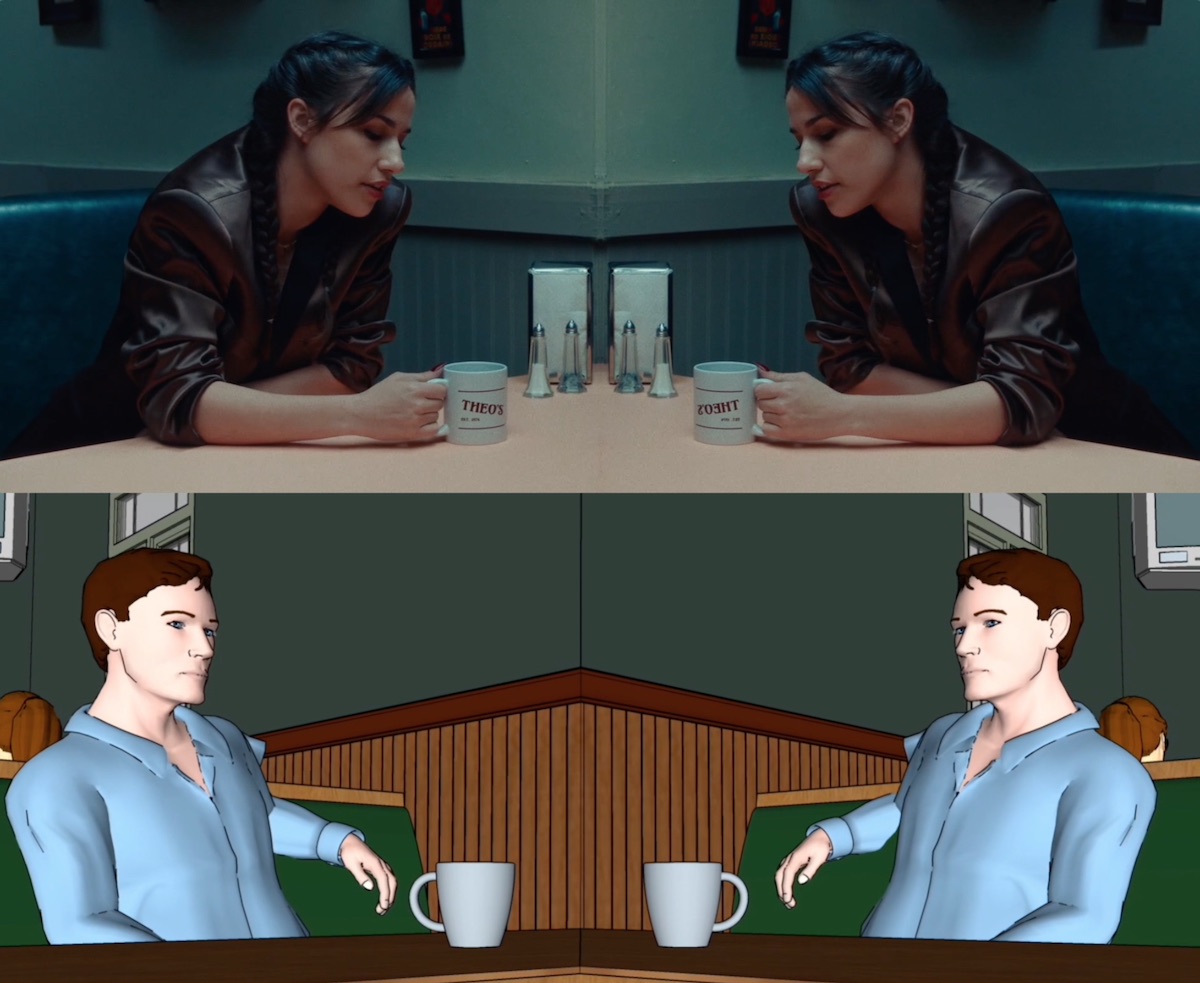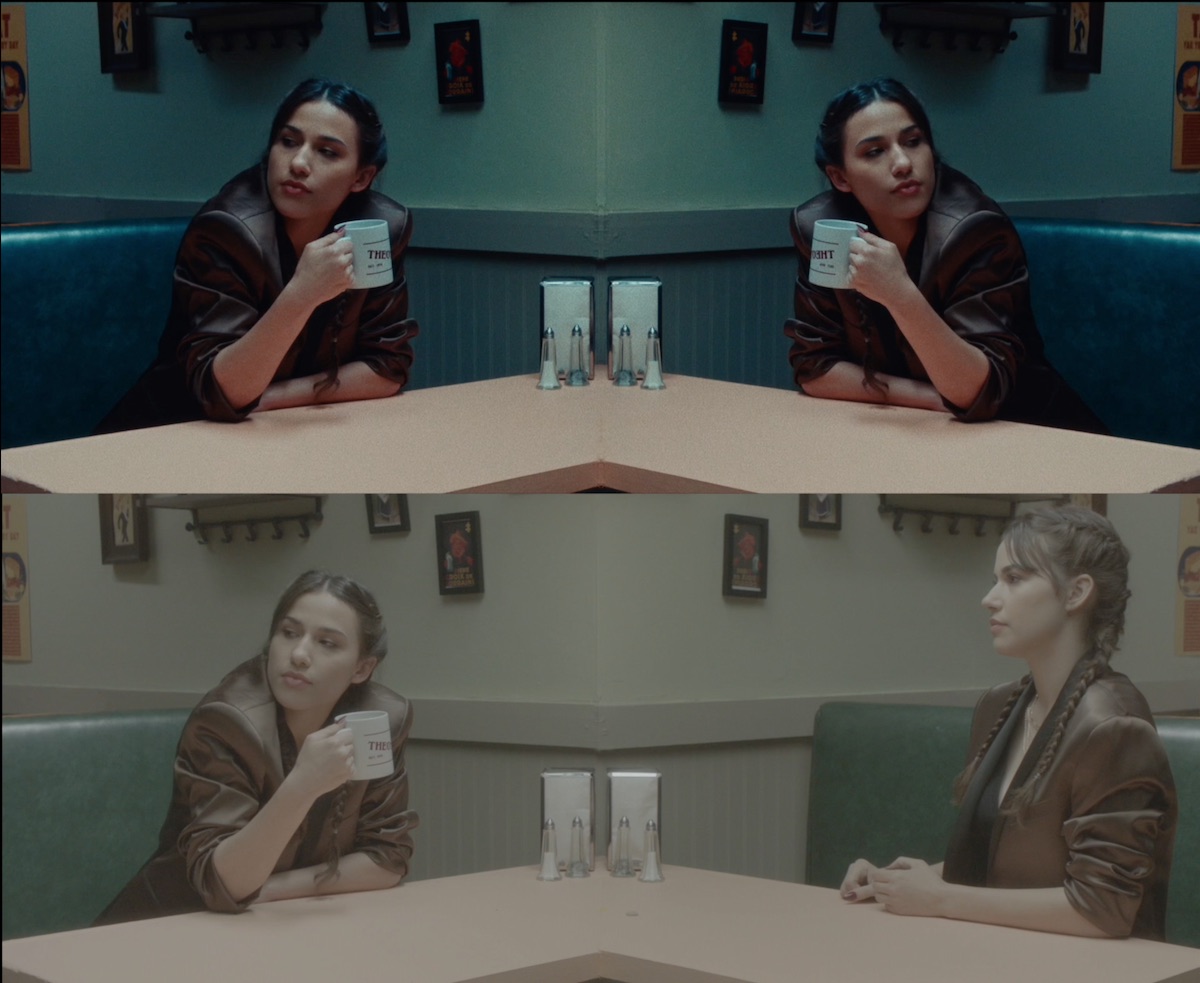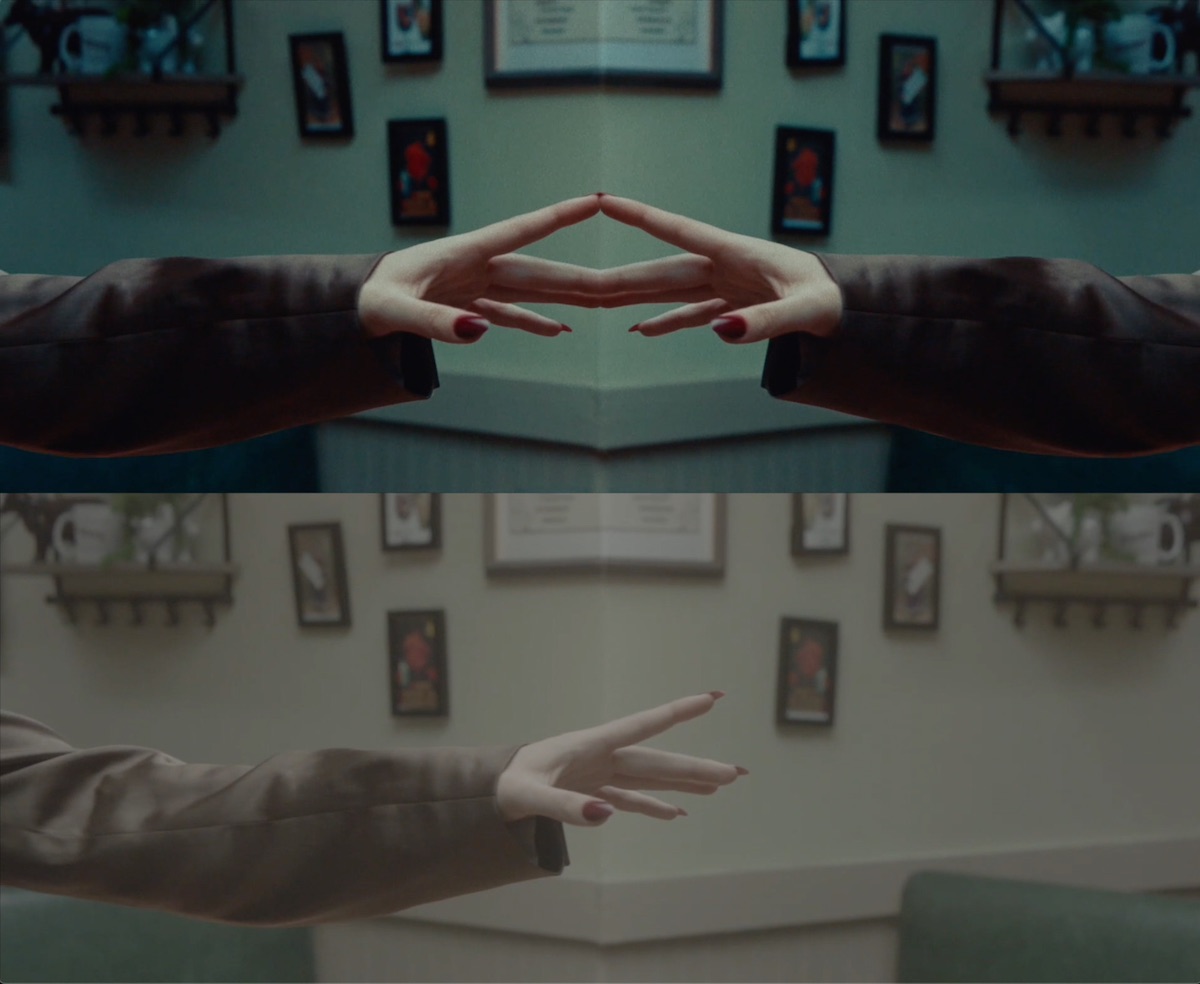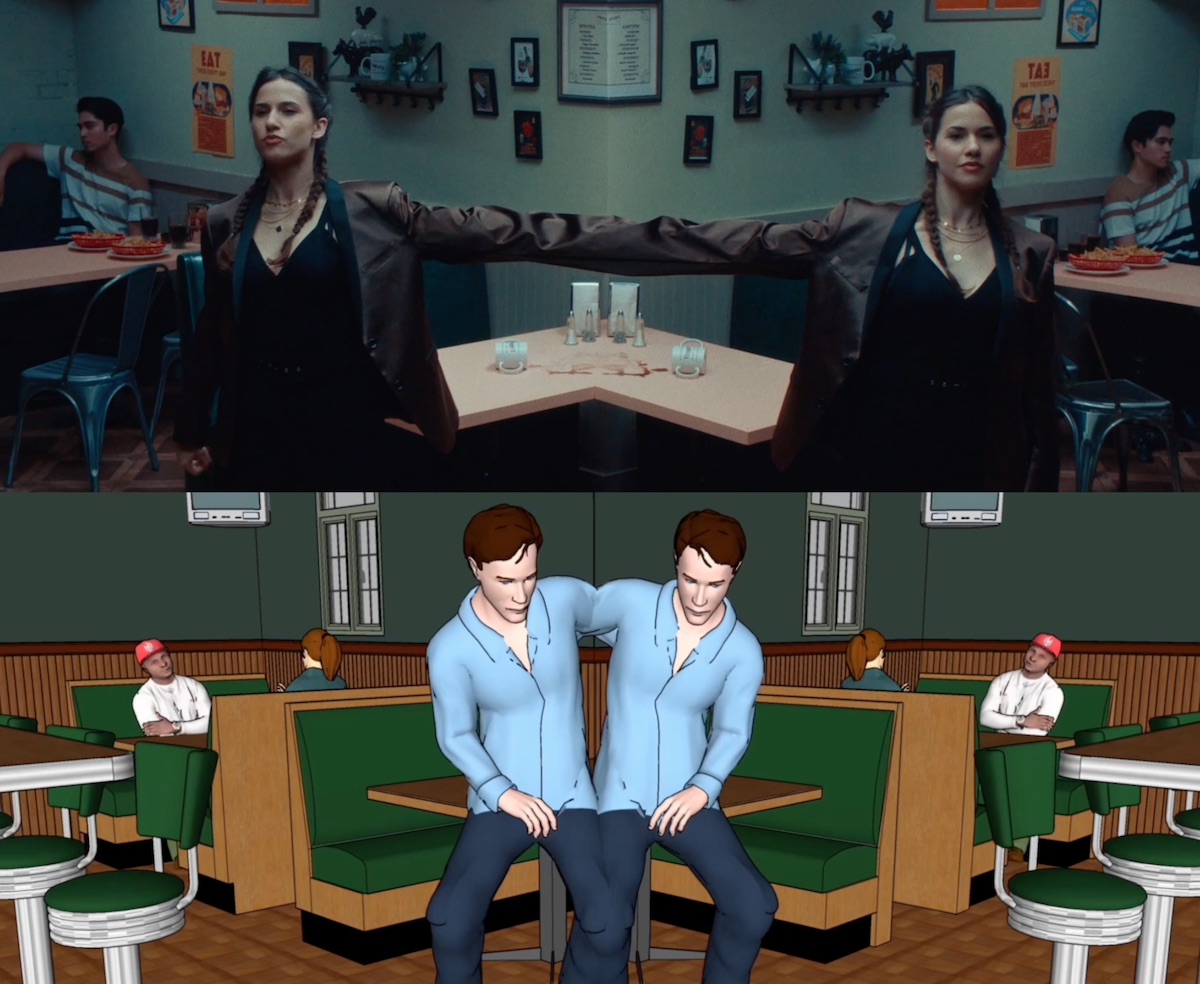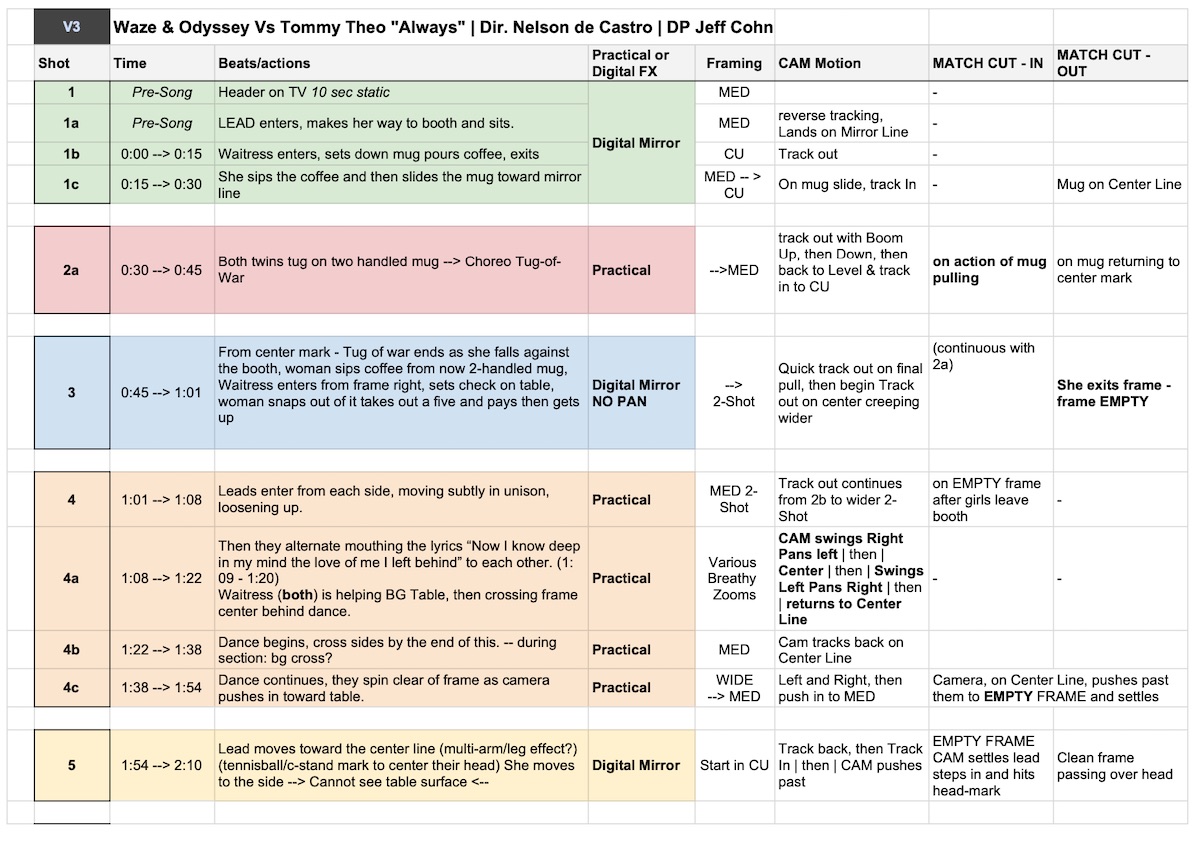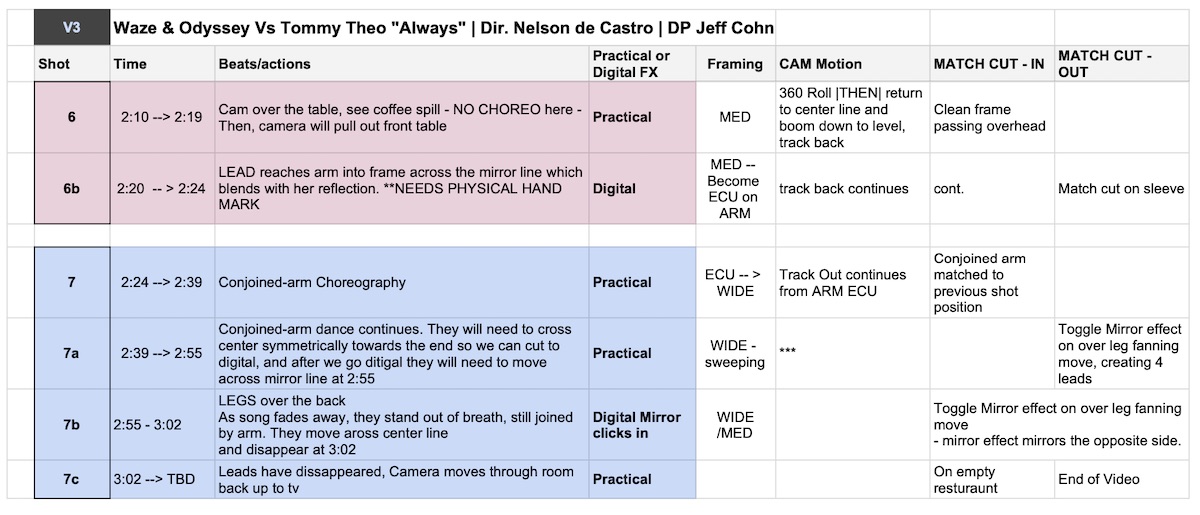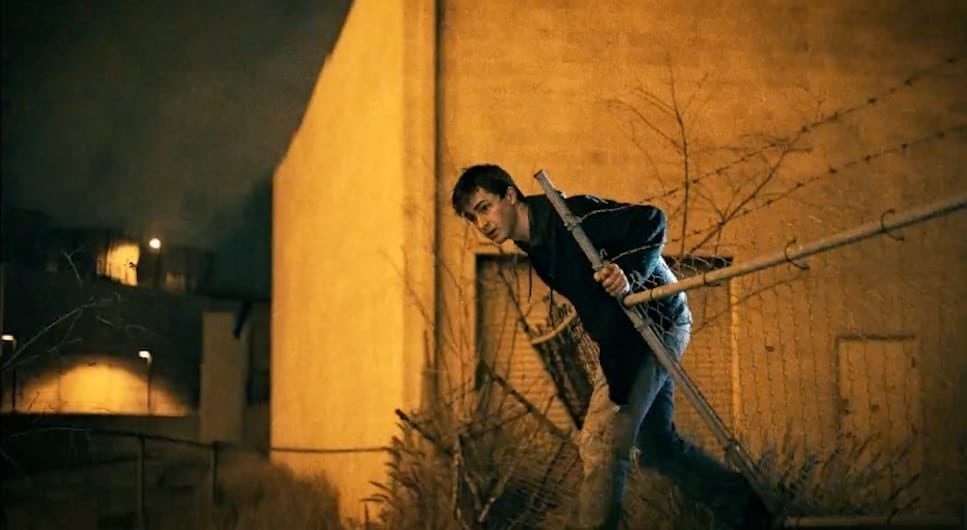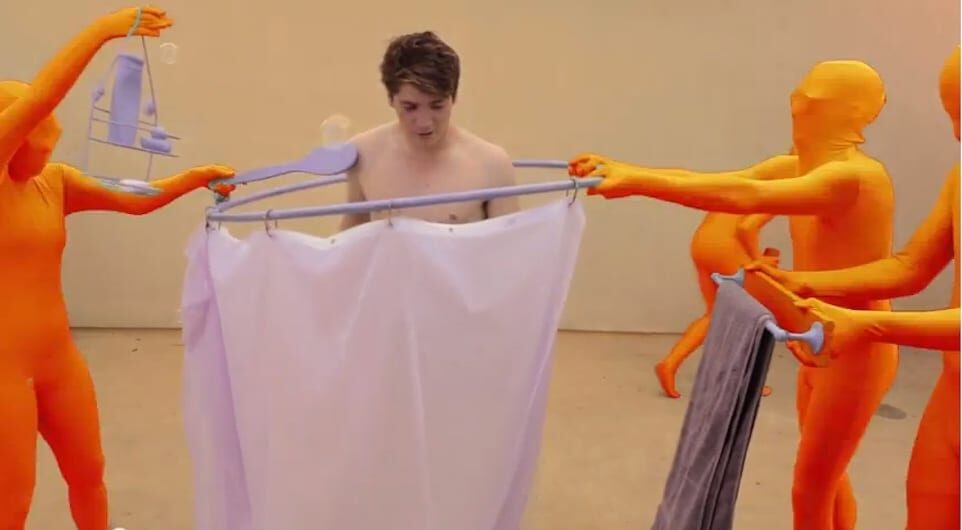Let’s start from the beginning – what were the initial conversations like with the artist and commissioner?
This concept spent about a year brewing on my computer before I got the brief for Always, so it was pretty well-formed when I first talked to Kat Cattaneo (commissioner). But an interesting challenge came up early in the process – that George Michael and Mary J. Blige would need to cameo in a creative way. I watched the original “As” video, which is a classic, and the most logical placement within our scene was on the TVs in the cafe. I hadn’t seen the original video (which features many duplicates of George and Mary) when I pitched this concept, so ironically the mirroring in ours ended up feeling like a nice conceptual homage.
I’d also planned on doing an ink-blot inspired coffee spill as a practical effect during the bridge, but was unsure what the design should be until we were discussing the cameo. This felt like another fun opportunity to incorporate them, in the vein of Christ appearing in toast, or the Virgin Mary in a burnt fishstick.
What drew you to the mirroring idea?
I love concepts that blur the line between digital and practical effects. I’ve of course watched tons of Gondry and Spike Jonze videos over the years and what I love is how they’ll start with a simple digital effect and then say “what if that effect were real”. Chemical Brothers “Let Forever Be” and HomePod “Welcome Home” are perfect examples, and this video was written in the same spirit.
The choreography must have been challenging to map out?
This was my first experience directing anything with proper choreography, and it was one of my favorite parts of the process. Our choreographer Monika Felice Smith was incredible, and boiled down my references (Fred Astaire, Christine and the Queens, Avalanches) into something entirely our own.
Mapping everything out was a huge challenge that involved so many google spreadsheet iterations I lost count (see below). I originally planned to break up the shooting more, based on what parts I knew would be a digital mirror and what would be practical. But as we got deeper into rehearsals with our leads, Allison and Veronica Huber, they were so good I felt we could hold longer in the edit, and also nail longer sections during the shoot which really helped us make our day. On set, Monika was a much needed second brain, calling out every beat and adjusting choreography on the fly.
In fact what were the main challenges of the production – please do tell us about the process of making it.
Like most complicated shoots, the vast majority of work was in prep. The initial script was a blast to write since there was a lot to dig in to within the concept. The first scene I imagined was the mug sliding and merging with itself, which became a precursor for the rest of the story.
From there, I built my usual crude animatic in Sketchup, which was a great tool for communicating and planning with each department. This may have been the most crucial part of the entire process, since it gave us all the answers we needed in terms of execution: ins and outs of each shot, art direction, choreography keyframes, pacing, camera movement, even costume design. By the time we got to set I felt like we’d already made the video once.
Every department presented some really interesting challenges since everything needed to be mirrored practically. How do we light symmetrically? Can we find a parquet flooring option that has a mirrored pattern (most parquets aren’t)? How would two people dance with a conjoined arm? What hairstyles work when we mirror her down the center? How do we fabricate a two-handled mug (turns out they sell them cheap online for arthritics)? Solving these kinds of questions is probably what I loved most about this project.
Just one girl, or were there doubles for the final sequences?
One of the biggest challenges on our shoot (that an animatic couldn’t solve) was our unorthodox casting situation. For the concept to work, and give us the freedom to fully play between digital and practical, we needed to design, build and cast a completely symmetrical scene. This included custom set design and doubling every person you see in the video, so we needed multiple sets of identical twins. One of my favorite details is the synchronized background action (orchestrated by our assistant choreographer Jen Aster) that’s nearly undetectable.
Not only did we need to find identical twins, we needed talented dancers, and I can’t overstate how lucky we were to find the Hubers. Their performance and personality act like a counterbalance to the heavy concept, which elevated the video beyond what I thought it could be.
Did the footage marry up easily in post or did some scenes have to be jettisoned?
We did two important things to make sure the effect would work, and that our stitching would be seamless. One, we used motion control and designed each section of camera movement to land precisely on the center axis of the mirrored set. This allowed us to toggle the digital mirror effect on and off while still keeping things seamless.
Two, on our prep day (and the morning of our shoot) we set up our camera on the center axis of the set and then used a mirror effect / onion-skin overlay with VTR to align set dressing in precise mirror symmetry. So much time was spent in dressing the scene and programming the camera move that we only had time for a couple takes of each shot. Since we were going for a oner, we couldn’t lose any shots and each had to stitch smoothly.
Even with all of our attention to detail in prep, our first cut still had plenty of jumpiness and obvious seams, but it was important to get it as close as possible in-camera so our VFX team, led by Bryan Fugal, could get it the rest of the way.
How did Lockdown impact on your production? Obvs shot before hand?
We were very lucky to sneak in the shoot in early March, right before lockdown. In post, things didn’t feel too abnormal, though I would’ve liked to sit in with my editor more than I was able to. Lots more waiting for renders and uploads to preview small changes, which slowed things down a bit.
Anything else you’d like to share?
There’s an easter-egg reference to every artist in the video, some more obvious than others: George and Mary in the coffee of course. One item on the central framed menu is the W & O special for Waze & Odyssey. “Theo’s Est.1976” on the mug for Tommy Theo, and the year corresponds with Stevie Wonder’s original “As” release. And lastly, the waitresses’ nametag reads “Stevie”, although you’d need a magnifying glass to spot it.
LINKS:

